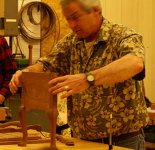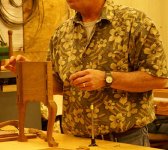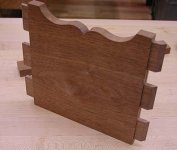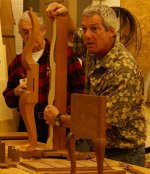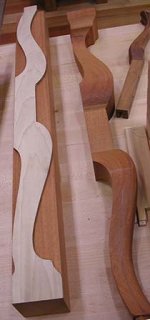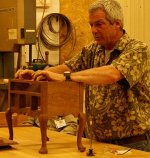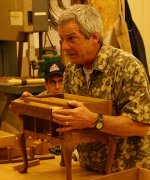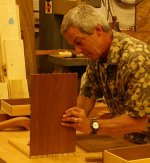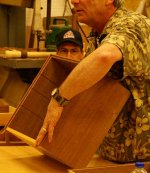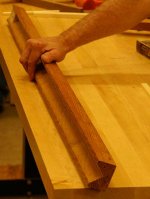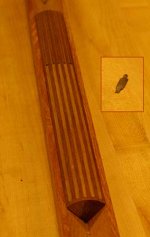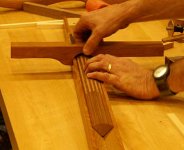You are using an out of date browser. It may not display this or other websites correctly.
You should upgrade or use an alternative browser.
You should upgrade or use an alternative browser.
Spring 2 2012 Meeting Photos
- Thread starter Bill Minnick
- Start date
Bill Minnick
Well-known member
Bill Minnick
Well-known member
Bill Minnick
Well-known member
Bill Minnick
Well-known member
Bill Minnick
Well-known member
Bill Minnick
Well-known member
To cut flutes and beads into a quarter column with a scraper, Jeff built a holding jig. Surprisingly, Jeff does not turn the column on a lathe, but shapes the column using hand planes and spokeshaves. On the stop fluted quarter column, note the flutes and beads. He makes the scraper convex and concave cutters from a cabinet scraper that a local machine shop cut into blanks.
Attachments
Bill Minnick
Well-known member
Holes for the cutter have been cut into the holder in the corresponding position for each segment of the column. Jeff cuts the center flute, then the outside flutes and finishes with the ones in between. Then he flips the column around and does the stop fluting. The intersection between the two sections is carved by hand.
Attachments
Peter Storey Pentz
Well-known member
I would like to thank Bill Minnick for writing and providing photographs of the Spring 2012 meeting of the Ohio River Valley Chapter of SAPFM. I would also like to thank Jeff Headley for sharing his method of making quarter columns. After having looked at a lot of quarter columns on period furniture I have never been entirely satisfied with the idea that they were all turned back in the 18th or 19th Centuries. Now, I have seen an equally plausible method for making them. PSP
Share:

